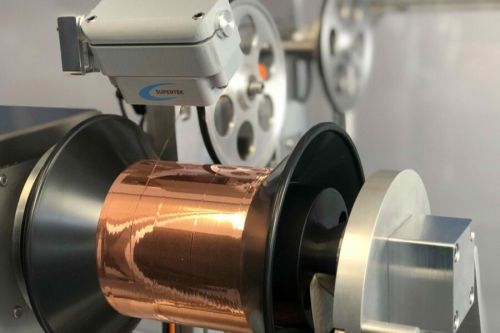Winder
A winder is a machine or assembly in winding technology that is used to neatly wind flexible materials such as wires, fibers, films, yarns, or cables onto a spool, drum, or core. Winders are a central element in the production, processing, and further refinement of a wide variety of products. Typical examples include optical fiber cables, textiles, and packaging films.
Basic principle
The basic principle of a winder is to wind a running material with controlled tension, speed, and winding geometry. Constant material tension is important to prevent damage or loss of quality. Equally crucial is an exact winding speed, which ensures uniform layer formation. In addition, the defined winding method, such as cross winding or parallel winding, provides the desired spool geometry.

Types of Winders
Depending on the application and the material, different designs are used.
- Single winder: A simple winding station, usually intended for shorter production cycles.
- Dual or turret winder: Allows continuous operation through automatic spool change without production downtime.
- High-speed winder: Designed for materials such as optical fibers that need to be wound at very high speeds, in some cases exceeding 1000 m/min.
- Special winder: Customized solutions for specific requirements, such as wide films or high-strength fibers.
Fields of Application
Winders are used in numerous industries:
- Telecommunications – for winding optical fibers and cables.
- Textile industry – for winding yarns and threads.
- Packaging industry – for producing film rolls.
- Electrical engineering – for winding coils and wires.
Significance
A modern winder is much more than a simple winding device. It ensures quality, efficiency, and process reliability in production. Advanced control systems, dancer mechanisms, and automated spool changes increase productivity and reduce downtime.